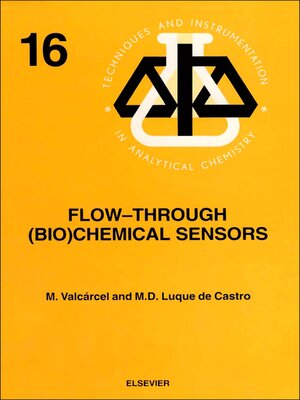Flow–Through (Bio)Chemical Sensors
ebook ∣ Techniques and Instrumentation in Analytical Chemistry
By M. Valcárcel

Sign up to save your library
With an OverDrive account, you can save your favorite libraries for at-a-glance information about availability. Find out more about OverDrive accounts.
Find this title in Libby, the library reading app by OverDrive.



Search for a digital library with this title
Title found at these libraries:
| Library Name | Distance |
|---|---|
| Loading... |
Flow-through sensors are more suitable than classical probe-type sensors for addressing real (non-academic) problems. The external shape and operation of flow-through (bio)chemical sensors are of great practical significance as they facilitate sample transport and conditioning, as well as calibration and sensor preparation, maintenance and regeneration, all of which result in enhanced analytical features and a wider scope of application. This is a systematic presentation of flow-through chemical and biochemical sensors based on the permanent or transient immobilization of any of the ingredients of a (bio)chemical reaction (i.e. the analyte, reagent, catalyst or product) where detection is integrated with the analytical reaction, a separation process (dialysis, gas diffusion, sorption, etc.) or both.The introductory chapter provides an overview of (bio)chemical sensors and their impact on analytical chemistry. Essential concepts of flow-through (bio)chemical sensors including their definition, classification, the types of flow-cells where the sensing microzone can be accommodated, continuous-flow configurations to which they can be coupled, the measurement modes available and the types of transient signals obtained, among others, are the subject of Chapter 2. The remaining chapters classify the most relevant types of flow-through (bio)chemical sensors according to the processes taking place at the sensing (recognition) microzone, as well as their position in space and time.The book deals critically with most types of flow-through sensors, discussing their possibilities and shortcomings to provide a realistic view of the state-of-the-art in the field. The large numbers of figures, the wealth of literature references and the extensive subject index complement the text.







